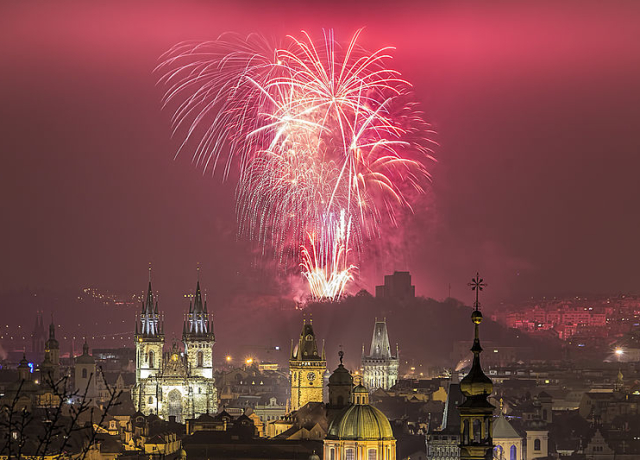European Heritage Days Article:
New Year’s traditions across Europe
European Heritage Days Article:
New Year’s traditions across Europe
Even in the modern world, taking part in festivities and traditions is a way many people connect with their heritage and celebrate important milestones and events, such as the passing of one year into the next. While many people’s plans have been adapted in recent years in response to covid-19, this article takes a look at some ways people across Europe traditionally celebrate the New Year.
While most in Europe will celebrate New Year’s Eve on 31st December, the date of New Year’s celebrations varies across countries and cultures, giving an insight into the history and development of this significant annual event. For example, Chinese communities across Europe celebrate according to a lunisolar calendar which for 2023 will start on 22nd January, while the 14th of January is another key New Year’s date which follows the Julian calendar and is observed in some Eastern European countries with an Orthodox Christian tradition. Other customs seen around this time of year also vary in date. For example, in Serbia and Turkey fir trees are decorated for New Year in a similar way to ‘Christmas trees’ seen elsewhere but reflecting the political history and religion of the countries.
One theme which ties many New Year’s traditions together is that they are based on bringing luck, prosperity, health or happiness in the upcoming year. For example, customs thought to bring good luck include wearing red underwear in Italy, which is a colour some specifically associate with fertility. In Denmark, jumping off a chair at midnight to literally leap into January is symbolic of overcoming challenges in the following year, while in Greece, the date itself is seen as auspicious, which is why many will enjoy playing games of chance such as cards and dice. Many other rituals around good fortune involve specific foods, for instance those given by ‘first footers’ – the first guests to arrive at a host’s door after midnight in Scotland – who bring gifts like bread, salt and whiskey representing hopes for what the year will bring such as good cheer. In Germany, lucky charms are made from marzipan, and these are often shaped into pigs because the phrase ‘schwein gehabt’ is an idiom expressing luck and roughly translates as ‘having a pig’. In Estonia, a lucky number of 7, 9 or 12 meals might be eaten on New Year’s Eve, while a particular custom in Spain representing luck for each of the months ahead is eating 12 grapes on the chimes of the clock at midnight… a challenge which requires speed eating!
Alongside food, music and dance are a central part of many festivities. In Austria you might see couples waltzing into the New Year to the music of Johann Strauss, while part of the Scottish Hogmanay celebrations sees groups in a circle singing ‘Auld Lang Syne’, an 18th century song translating as “for the sake of old times”. Other traditions reflecting on the passing of time can be seen in Italy where old pots, pans and clothes might be thrown out of windows to let go of the past, and in Ireland where entering or opening a home’s front door symbolises letting the New Year in while leaving by the back door lets the old year out.
With millions celebrating by watching fireworks, eating special foods and gathering with friends and family for 12am, New Year’s festivities are a widely shared aspect of cultural heritage across Europe. And yet the range of activities and local traditions is also a fascinating example of the diversity of cultural heritage which European Heritage Days aims to raise awareness of too. However you are celebrating 2023, we wish a very Happy New Year to you all from European Heritage Days!
After the successful 2022 European Heritage Days season, preparations are now underway for 2023. A brochure full of advice, tips and ideas for organisers and coordinators on how to participate and make the most of the Living Heritage shared theme will be released on our website soon.
